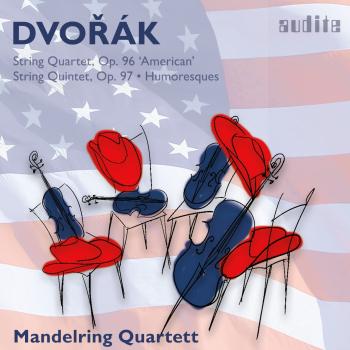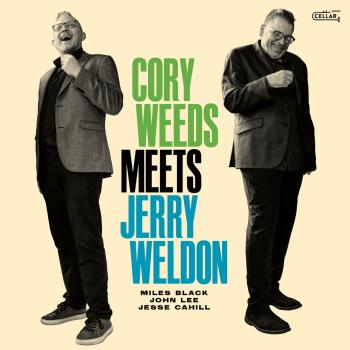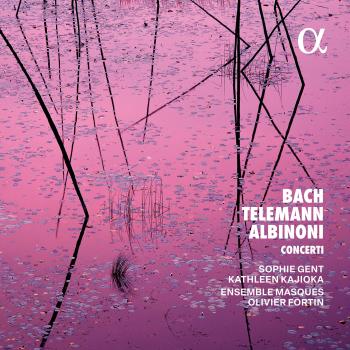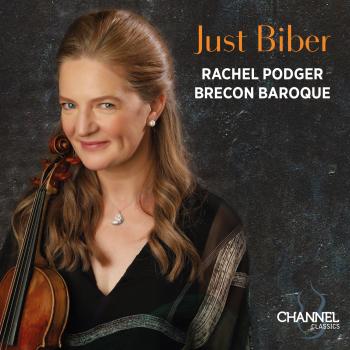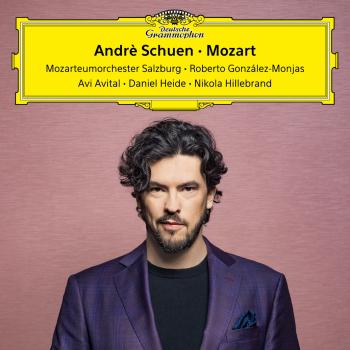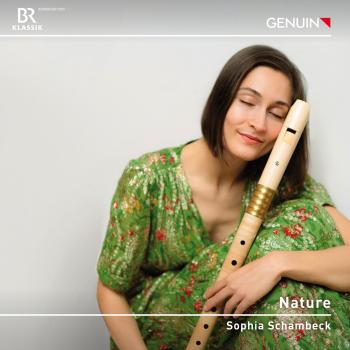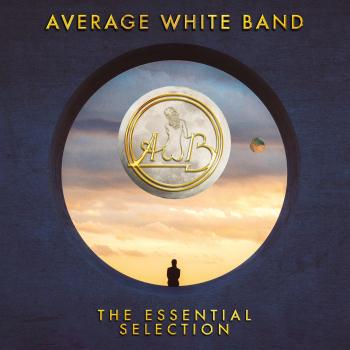
Braga Santos: Sinfonietta for Strings / Violin Concerto Alvaro Cassuto & Northern Sinfonia
Album info
Album-Release:
2002
HRA-Release:
18.04.2013
Album including Album cover
- 1 I. Largamente maestoso Allegro 07:01
- 2 II. Adagio non troppo 06:13
- 3 III. Allegro ben marcato 06:29
- 4 I. Adagio Allegro 06:11
- 5 II. Adagio 06:31
- 6 III. Allegro ben marcato, ma non troppo 05:26
- 7 Variations Concertantes for Strings and Harp 11:13
- 8 I. Largo 06:04
- 9 II. Allegro 04:38
- 10 III. Adagio 08:09
Info for Braga Santos: Sinfonietta for Strings / Violin Concerto
Joly Braga Santos was born in 1924 in Lisbon, where he died in 1988, at the height of his musical creativity. Although he composed only six symphonies, he was undoubtedly the leading Portuguese symphonist of the century and, in a way, of all time, considering that the symphonic output of Portuguese composers in the eighteenth and nineteenth centuries is not significant. Apart from an innate sense for good orchestration, his musical language is based on a strong musical architecture as well as drama, with generous melodic lines and a natural instinct for structural development as well as formal coherence. In his own words, he wanted to contribute “toward a Latin symphonism and to react against the predominant tendency, of the generation that preceded me, to reject monumentalism in music”.
Having studied the violin and composition at the Conservatory in Lisbon, Joly Braga Santos became a disciple of Luis de Freitas Branco (1980-1955), the leading Portuguese composer of the preceding generation. Through the influence of his mentor, he opted, first, for a modal writing which he would eventually abandon in favour of a free chromaticism which is nevertheless based on tonal writing. Although he was not particularly interested in Portuguese folklore, studying and composing at the country home of his mentor, in the rural south of Portugal, the Aleutejo, he willingly accepted the influence of local folk-songs.
The four works for strings here included reflect clearly enough the musical evolution of Braga Santos. For this reason the works follow the chronological order of their composition: Concerto in D (1951), Sinfonietta (1963), Concertante Variations (1967) and Double Concerto for Violin and Cello (1968). These compositions give us an idea of the variety and richness of the works Braga Santos. Indeed, each of these, though composed for the same instrumental ensemble, strings, has its own characteristic, both stylistically as well as instrumentally. The coherence and inter-relation between the form and the harmonic idiom as well as of the use of counterpoint are quite obvious. Thus, the Concerto in D has an extremely traditional form which is also reflected in its harmonic idiom and contrapuntal writing: the Sinfonietta for 12 solo strings, is formally condensed as a result of the reduced dimension of the orchestra; the Concertante Variations, with its high harmonic and contrapuntal density, is consequently divided into a series of short sections: finally, the Double Concerto, written for two solo instruments with orchestral accompaniment, follows basically the traditional concerto form.
The Concerto in D is dedicated to the Academy of Chamber Instruments of the Portuguese Radio, which gave the work its world première. The modal writing (Phrygian mode) is immediately apparent in the initial theme, which is the basis for the slow introduction, marked Largamente maestoso. One also notices, following the opening tutti, another characteristic of Braga Santos’ writing: the use of instrumental solos, in this case, the solo violin, viola and cello, contrasting with the tutti. The Allegro which follows is based on two themes: the first one, with an incisive rhythm, is like a fast version of the initial theme, while the second one, lyrical in character, is played by the violins with the cellos and basses in imitation. The movement follows the traditional sonata form of exposition, development, recapitulation and coda. The second movement, slow, with the direction Adagio non troppo, also tripartite in structure, with the central section in marked contrast, is one of the most expressive movements by Braga Santos. It is certainly not a coincidence that I conducted it at the request of the composer’s widow during the Mass at the funeral of Braga Santos in 1988. The third movement, Allegro ben marcato, has the character of a popular dance in 514. It is a rondo with a coda in triple metre.
The Sinfonietta for string orchestra, composed in 1963, is dedicated to Alvaro Cassuto and the Gulbenkian Chamber Orchestra. I conducted its première in 1963. Scored for twelve solo strings, four first and three second violins, two violas, two cellos and one double bass, the work has three movements. The first of these has a slow introduction, marked Adagio, in which the first solo violin plays a leading role immediately after the initial unison. Following freely sonata form, although without a recapitulation, the Allegro has a first theme played by the strings in which the twelve solo instruments are treated like an orchestral tutti, while the second theme, influenced by Portuguese folk-music, is lyrical, being entrusted to two solo violins with a pizzicato accompaniment by the remaining strings. The second movement Adagio has an introduction in which Braga Santos explores tone colours which, to a certain extent, reflect the influence of the Second Viennese School of Schoenberg and his disciples Alban Berg and Anton Webern. The central part of the movement is a long melodic line in the first violins in unison. The coda of this movement is performed by the solo violin with an accompaniment of sustained notes by the remaining eleven players, each one of whom plays a different note. In the last bars, Braga Santos shows clearly that he did not eschew the influence of tone clusters of the avant-garde of the 1960s. The third movement, with the direction Allegro ben marcato, ma non troppo, is in free sonata form. The first theme has an incisive character while the second lyrical theme is played by four solo instruments, two violins, one viola and one cello. Before the final coda, the movement is interrupted by a Largo in which the first solo violin is accompanied by the remaining strings in a fashion which is similar to that of the coda of the second movement.
As the title indicates, the Concertante Variations for string orchestra and harp is a series of variations in which different instruments, the section leaders of the first and second violins, of the violas and of the cellos as well as the harp, play a “concertante” or soloistic rôle. Its texture is extremely dense as a result of an enormous wealth of contrapuntal writing. It has one movement only, basically an Adagio slow movement with a fast middle section, marked Più mosso, and a fast coda, Mosso. In the original score there is no indication as to which is the theme and which are the variations. We can, however, distinguish the following sections:
'This latest installment in Marco Polo's fine ongoing survey of the orchestral works of Portuguese composer Joly Braga Santos features some interesting music from his later, more dissonant period. The Sinfonietta for Strings (1963) shows the composer in transition, his earlier Romantic modal style rubbing shoulders with the spikier idiom to come. It's a combination that produced some of Braga Santos' most appealing music (including the gorgeous Divertimento No. 1 that hopefully will come along shortly), and Alvaro Cossuto leads the Northern Sinfonia in a trenchant, rhythmically vital performance that should win the work many friends.
The Variations Concertantes for Strings and Harp (1967), despite the potentially enticing medium employed, is a very dense, harmonically acerbic piece that doesn't yield its secrets easily despite some fascinating textural gestures. But the Concerto for Violin, Cello, Strings, and Harp (1968) arrives at a Bartokian synthesis of folk and modernist elements that, while still challenging, offers ample rewards on repeated listening.' (David Hurwitz, ClassicsToday.com)
Bradley Creswick, violin
Alexander Somov, cello
Sue Blair, harp
Northern Sinfonia
Álvaro Cassuto, conductor
Digitally remastered.
Álvaro Cassuto
is Portugal’s foremost conductor. He has been music director of the Portuguese National Radio Symphony Orchestra, the University of California Symphony Orchestra, the Rhode Island Philharmonic, the National Orchestra of New York, the Israel Raanana Symphony Orchestra, and the Lisbon Metropolitan Orchestra.
He was also the founding music director of three other Portuguese orchestras, the Nova Filarmonia Portuguesa, the Portuguese Symphony Orchestra and the Algarve Orchestra.
Born in Porto, he studied in Lisbon, and after establishing himself as one of the most promising young composers of the avant-garde of the early 1960s, went on to study conducting with Herbert von Karajan in Berlin. After graduating from the law school at the University of Lisbon, he obtained his conducting degree in Vienna.
A recipient of the Koussevitzky Prize in Tanglewood among many other honours, he has enjoyed a career of high international acclaim, and spent almost two decades in the United States where his annual subscription concerts at Carnegie Hall with the National Orchestra of New York were enthusiastically received by the New York Times.
He has been a frequent guest of many leading orchestras, including the London Symphony, the Royal Philharmonic, the London Philharmonic, the Philadelphia Orchestra, and dozens of others across the world. He has a discography encompassing over fifty recordings with a variety of orchestras and for different labels, among which a highly successful ongoing series for Marco Polo and Naxos, initiated in 1997 and dedicated to Portugal’s most important composers, which has met with enthusiastic and unanimous praise from the international press.
In 2009 the President of Portugal bestowed on him the degree of Grand Officer of the Military Order of Sant’Iago da Espada, the highest honour ever granted to a musician.
This album contains no booklet.

